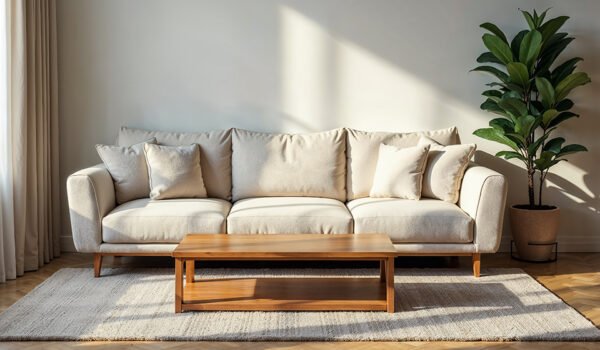Storing Christmas decorations safely and efficiently is essential to preserving your treasured holiday memories and making future decorating easy. After the festive season ends, rather than tossing ornaments and lights into a box, take a thoughtful, organized approach to reduce damage and clutter the following year. Whether you have a wide range of delicate ornaments, bulky wreaths, festive string lights, or artificial trees, following best storage practices safeguards your decorations and saves you time annually. This guide will walk you through proven tips and clever solutions for keeping your holiday decor in top shape.
Start with Clean and Organized Packing
Before storing, gently clean all decorations. Dust or wipe ornaments, remove any debris from garlands, and ensure wreaths aren’t carrying dirt or moisture. This step prevents damage and mold during storage. After cleaning, use clear plastic bins or tailor-made storage boxes designed specifically for holiday decor. Clear bins make it easy to identify contents without unpacking, while specialty boxes with dividers protect fragile ornaments from bumping into each other.
Protect Fragile Ornaments Creatively
Delicate ornaments need extra care. Many people reuse original packaging, as it is designed to keep items safe. If you no longer have these, egg cartons or coffee cup holders make perfect DIY compartments to nest ornaments individually, preventing breakage. Another excellent option is repurposed wine boxes with built-in cardboard dividers, which keep ornaments separated and cushioned.
For extra protection, wrap each ornament in tissue paper or bubble wrap before placing it in storage. Label boxes clearly with the contents (e.g., “Glass Ornaments” or “Sentimental Ornaments”) to streamline next year’s decorating process.
Safely Store Large or Bulky Items Like Wreaths and Garland
Wreaths, garlands, and tinsel often pose storage challenges due to their size and shape. Hanging wreaths on clothes hangers inside dry closets prevents crushing. Covering wreaths in dry-cleaning bags helps keep them dust-free and in shape for months. For garlands, rolling
them around cardboard tubes, such as those used for wrapping paper cores, keeps strands from tangling and bending.
These methods keep your popular, bulky decorations fresh and ready for next season’s display.
String Lights Storage without Tangles
Christmas string lights are notoriously tricky to store due to tangling and delicate bulbs. Wrapping lights around empty spools, plastic pipes, or even used cans keeps them organized and protected. Cardboard pieces with notches also work well to keep light ends secure. Before storage, test the lights to ensure they work and replace any burned-out bulbs to avoid frustration next season.
Proper Tree Storage for Artificial Christmas Trees
Artificial trees should be disassembled and cleaned before packing. Shrink-wrapping with food plastic wrap is a favored method because it keeps dust out and compacts the tree for space efficiency. Alternatively, large garment bags designed for suits or dresses accommodate trees without damage while guarding against dust and insects.
Use breathable bags or wrapping methods to prevent moisture buildup, ensuring your tree stays fresh year after year.
Choosing the Right Storage Location
Storage environment matters greatly. A dry, cool, and dark area, such as a basement, attic, or designated closet, protects decorations from moisture, pests, and sunlight fading. Avoid damp areas and places where temperatures fluctuate frequently, as this can degrade materials and promote mold growth.
If you lack indoor space, Keter’s outdoor storage sheds offer weather-resistant and secure protection for Christmas decorations. These sheds combine durability with easy access, making outdoor storage a viable, efficient option—even in varying climates.
Labeling and Inventory for Easy Sorting
Label every box or bag with contents, grouping decorations by type (lights, ornaments, wreaths) or theme (red ornaments, vintage decor). Consider numbering boxes and keeping a simple list or photos of items inside for easy reference. This organization saves time and hassle during decorating season, preventing last-minute rummaging or lost pieces.
Safety Tips for Long-Term Storage
● Avoid storing decorations near heat or water sources to reduce fire risk or moisture damage.
● Keep sharp or breakable items out of children’s reach.
● Store batteries and electrical decorations separately, but clearly labeled to prevent leakage or damage.
● Handle fragile items carefully when packing and unpacking to maintain their lifespan and appearance.
Regular Maintenance and Inspection
Before unpacking your Christmas decorations each year, inspect boxes for pests, moisture, or damage. Test lights and electronic decorations to identify any issues early. Routine checks reduce surprises during busy holiday seasons and allow you to plan replacements or repairs.
By investing time in proper storage methods, cleaning, labeling, and choosing the right storage locations— you’ll preserve your Christmas decorations beautifully year after year. With organized, protected storage, decorating becomes more joyful and stress-free, letting you focus on creating new holiday memories.





